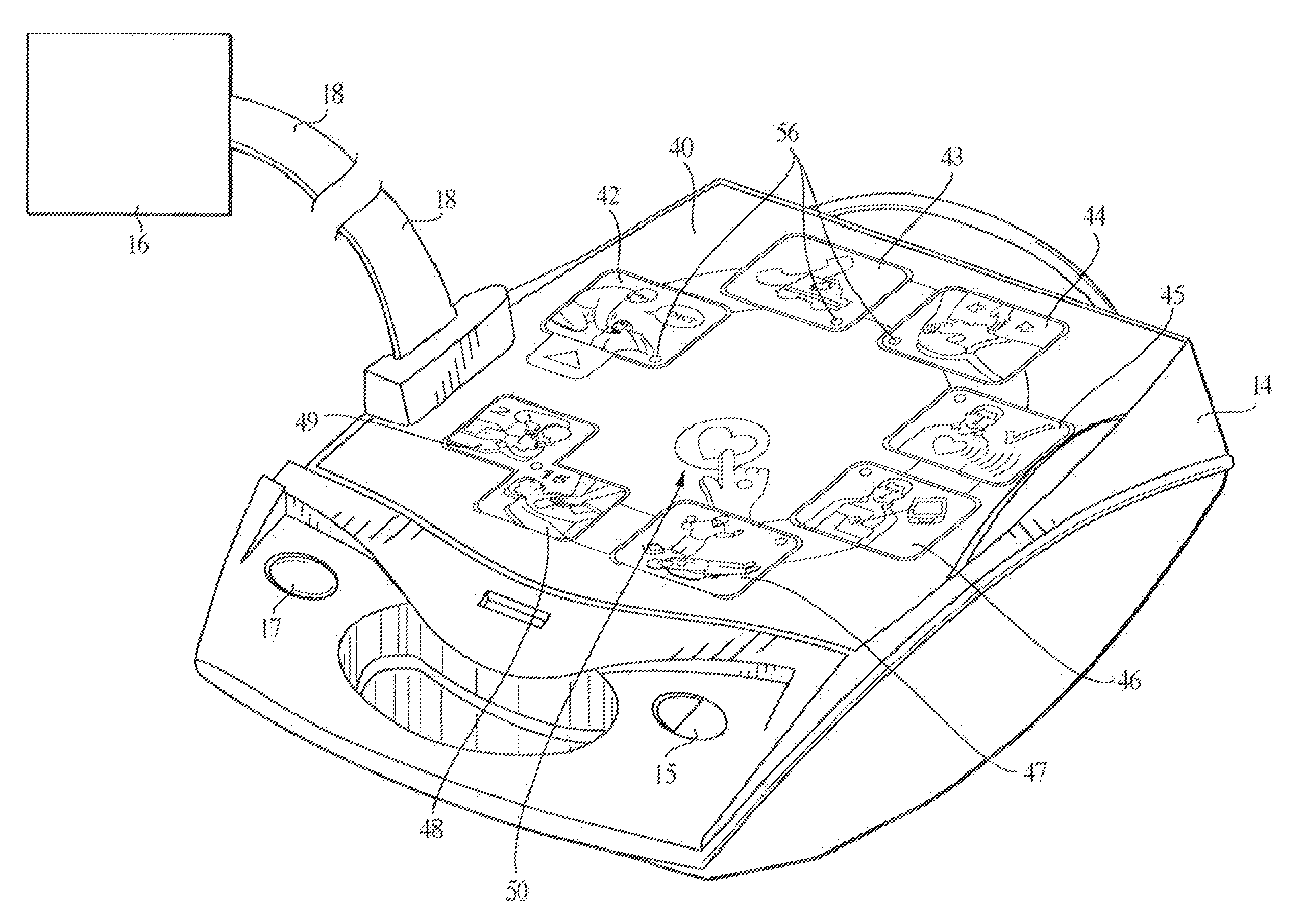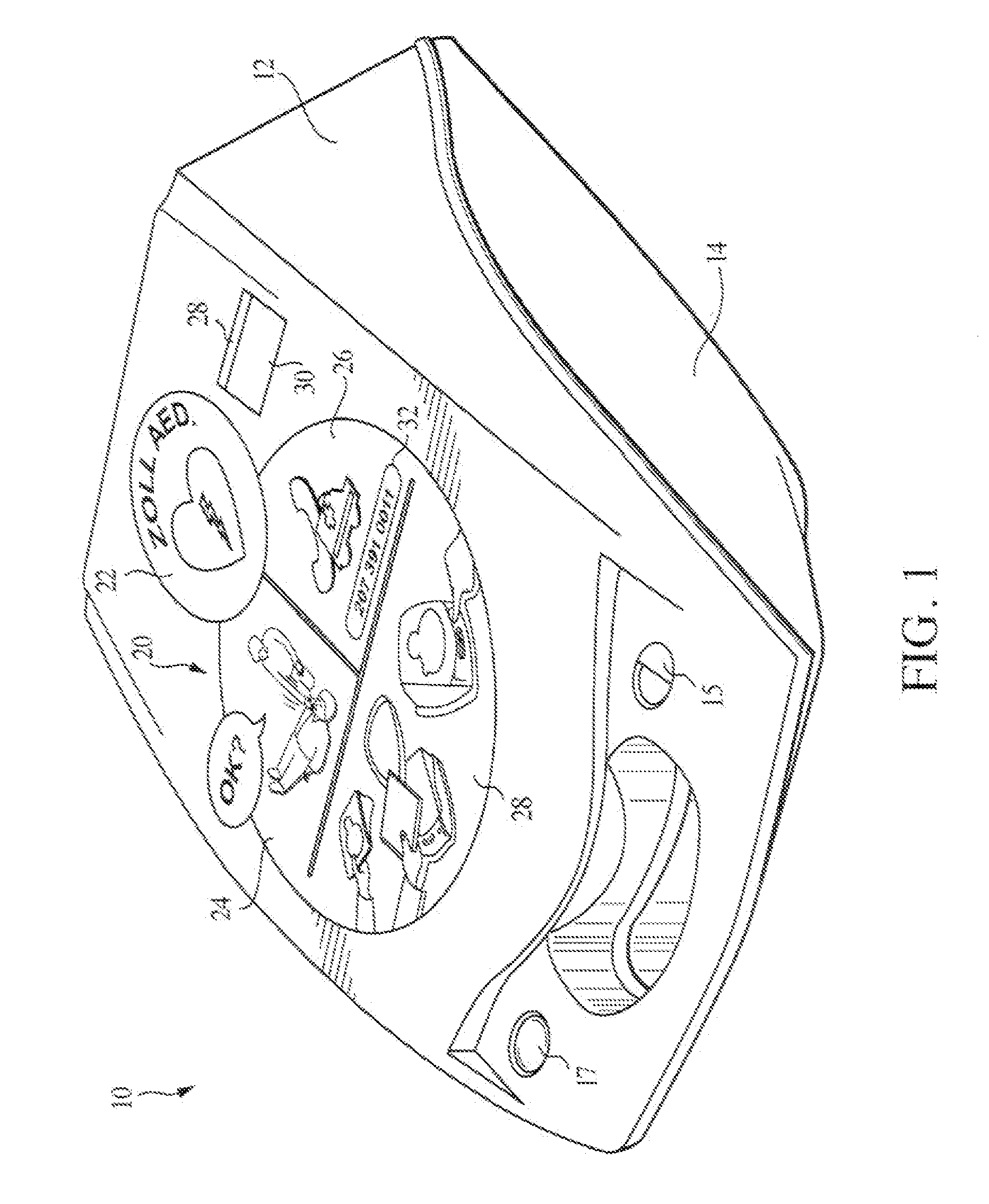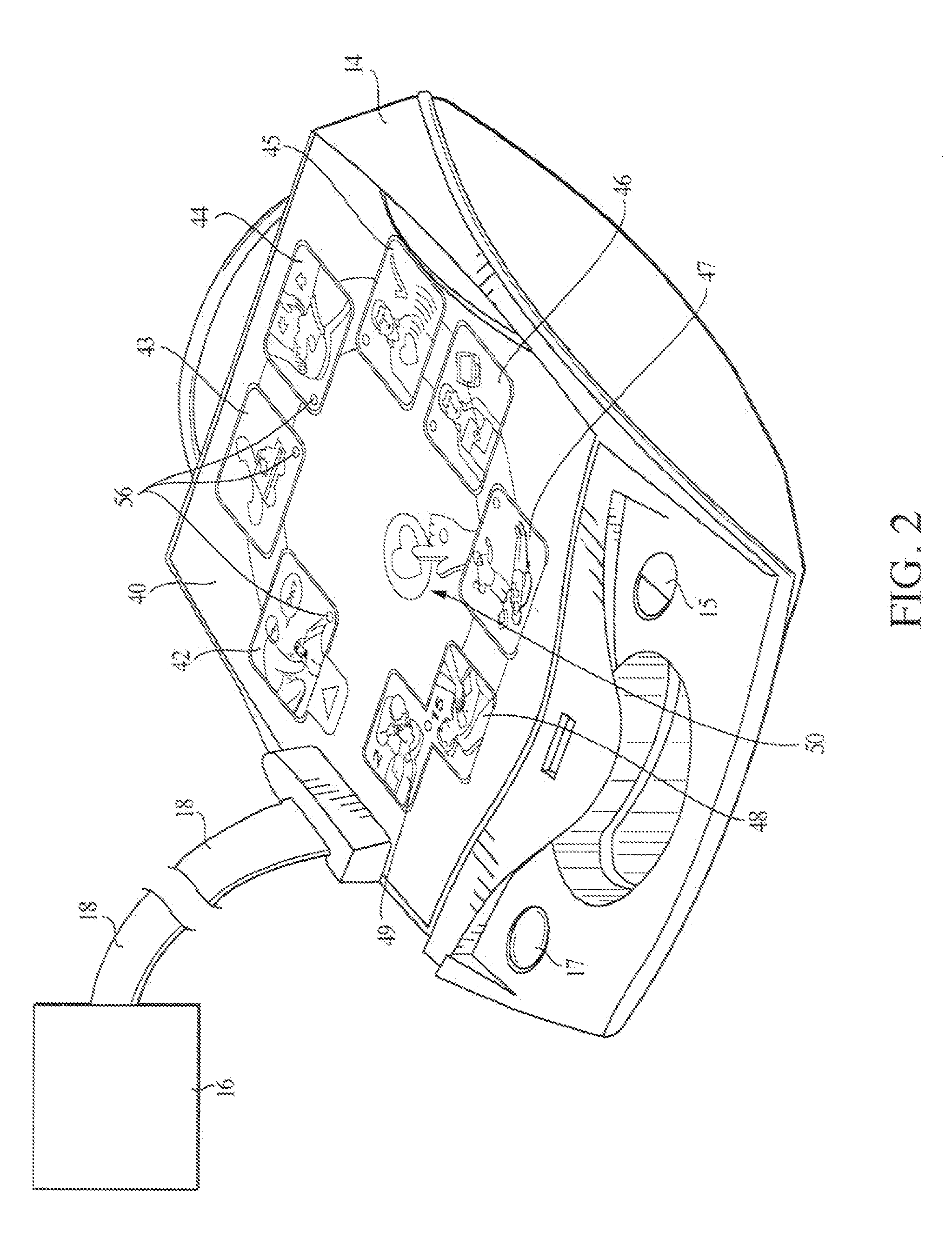Defibrillators
- Summary
- Abstract
- Description
- Claims
- Application Information
AI Technical Summary
Benefits of technology
Problems solved by technology
Method used
Image
Examples
Embodiment Construction
Referring to FIG. 1, an automated external defibrillator 10 includes a removable cover 12 and a control box 14. The defibrillator 10 is shown with cover 12 removed in FIG. 2. An electrode assembly 16 (or a pair of separate electrodes) is connected to the control box 14 by a cable 18. Electrode assembly 16 is stored under cover 12 when the defibrillator is not in use.
Control box 14 includes a power button 15 and a status indicator 17. Status indicator 17 indicates to the caregiver whether the defibrillator is ready to use.
The cover 12 includes a cover decal 20 (FIGS. 1 and 3) including a logo 22 and a series of graphics 24, 26 and 28. Logo 22 may provide information concerning the manufacturer of the device and that the device is a defibrillator (e.g., “Zoll AED”, as shown in FIG. 3, indicating that the device is a Semi-automatic External Defibrillator available from Zoll Medical). Graphics 24, 26 and 28 lead the caregiver through the initial stages of a cardiac resuscitation sequenc...
PUM
 Login to View More
Login to View More Abstract
Description
Claims
Application Information
 Login to View More
Login to View More - R&D
- Intellectual Property
- Life Sciences
- Materials
- Tech Scout
- Unparalleled Data Quality
- Higher Quality Content
- 60% Fewer Hallucinations
Browse by: Latest US Patents, China's latest patents, Technical Efficacy Thesaurus, Application Domain, Technology Topic, Popular Technical Reports.
© 2025 PatSnap. All rights reserved.Legal|Privacy policy|Modern Slavery Act Transparency Statement|Sitemap|About US| Contact US: help@patsnap.com



